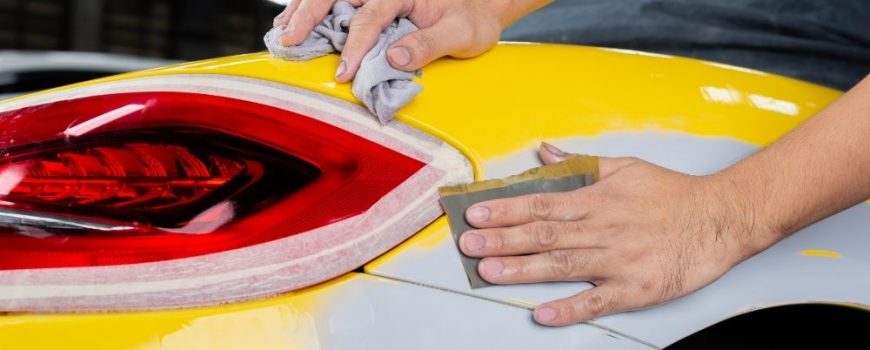We all want our cars to look their best, but no matter how much we clean and polish, there are still imperfections on the paint surface. Swirl marks, scratches, and water spots can all ruin the look of an otherwise perfect paint job.
One way to get rid of these imperfections is to wet sand the car. We’ll look at what wet sanding means and when it’s necessary to do this process. We’ll also look at how to wet sand a car, step-by-step, to see the results you can get with this method.
What Is Wet Sanding?
Wet sanding is the process of using sandpaper on wet surfaces to smooth out imperfections. The water lubricates the surface and prevents the sandpaper from clogging up. It also helps to cool the surface and prevent the paint from getting too hot.
The wet sanding process often works on cars with new paint jobs. Even if the new paint job looks perfect, it can begin to look dull or cloudy over time, especially with regular use and cleaning. Wet sanding is a way to remove these imperfections and restore the original shine of the paint.
Steps To Do It Yourself
Wet sanding is a relatively simple process you can do at home with the right supplies. Here’s what you’ll need:
- Automotive wet and dry sandpaper in different grits (1000, 1500, 2000)
- Spray bottle filled with water
- Polisher
- Foam pad
- Polish
- Clean towel
- Wax
Here’s a quick overview of the steps to wet sand your car:
1. Start with a clean car. Make sure there is no dirt or debris on the surface that could scratch the paint.
2. Use the 1000 grit sandpaper to wet sand the entire car. You don’t need to apply a lot of pressure; move the sandpaper in circles on the whole surface.
3. Use the 1500 grit sandpaper and repeat the previous step until you’re satisfied with how smooth the surface feels.
4. Repeat the previous steps with the 2000 grit sandpaper, moving from top to bottom on each car panel.
5. Use the polisher and foam pad to buff the surface and remove any remaining fine scratches.
6. Finish with waxing, and that’s it!
As you can see, wet sanding your car is not as difficult as it may seem.
When To Do It
Automotive wet and dry sandpaper is a great tool for new cars or vintage cars with a new paint job. However, there are certain times when you may need to wet sand your car even if it didn’t get a new paint job, such as:
- After using harsh chemicals that dull the finish.
- If deep scratches appear and can’t be polished out.
- If swirl marks appear after polishing.
Wet sanding may seem like a daunting task, but you can get professional results in no time with the right supplies and step-by-step instructions!
As long as you have the suitable materials and are careful not to scratch the surface, you’ll be able to restore your car’s shine with wet sanding in no time.

